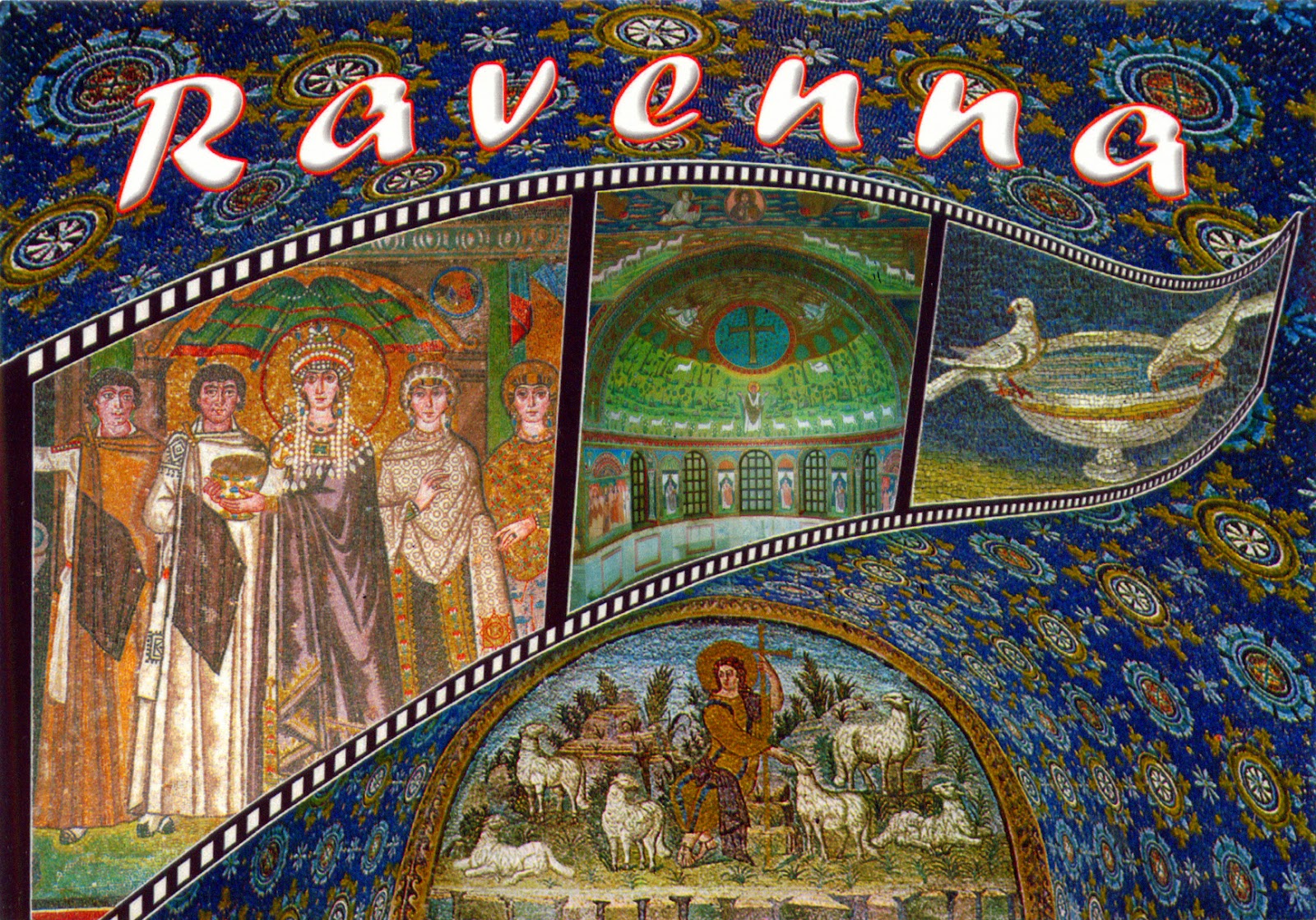August 22, 2014
1198 ITALY (Emilia-Romagna) - Early Christian Monuments of Ravenna (UNESCO WHS)
With an Etruscan name, Ravenna was the capital city of the Western Roman Empire from 402 up to its collapse in 476, then served as the capital of the Kingdom of the Ostrogoths until it was re-conquered in 540 by the Eastern Roman (Byzantine) Empire. Afterwards, the city formed the centre of the Exarchate of Ravenna until the invasion of the Franks in 751, after which it became the seat of the Kingdom of the Lombards.
The early Christian religious monuments in Ravenna are of outstanding significance by virtue of the supreme artistry of the mosaic art that they contain, and also because of the crucial evidence that they provide of artistic and religious relationships and contacts at an important period of European cultural history. All eight buildings included among UNESCO sites (the Mausoleum of Galla Placidia, the Neonian Baptistery, the Basilica of Sant'Apollinare Nuovo, the Arian Baptistery, the Archiepiscopal Chapel, the Mausoleum of Theodoric, the Church of San Vitale and the Basilica of Sant'Apollinare in Classe) were constructed in the 5th and 6th centuries.
First image from the left depicts Empress Theodora mosaic in Basilica of San Vitale, begun by Bishop Ecclesius in 526, when Ravenna was under the rule of the Ostrogoths and completed by the 27th Bishop of Ravenna, Maximian, in 547, preceding the Byzantine Exarchate of Ravenna. The following is a mosaic which decorates the apse of the Basilica of Sant' Apollinare in Classe, erected at the beginning of 6th century by order of Bishop Ursicinus. In the middle is the figure of Saint Apollinaris, the first bishop of Ravenna and Classe, portrayed in the act of praying God to give grace to his faithful, symbolized by twelve white lambs.
In the third image is a mosaic depicting doves drinking from a fountain, located in the Mausoleum of Galla Placidia (died 450), daughter of the Roman Emperor Theodosius I. It is unknown what the building was intended for when it was built. Mosaics cover the walls of the vault, the lunettes and the cupola. The background image of the postcard depicts the Lunette of Christ as Good Shepherd over the north entrance of the same building. Christ is being depicted as more regal than prior depictions of him as good shepherd. Rather than carrying a lamb over his shoulder, Jesus sits amongst his flock, haloed and robed in gold and purple.
About the stamp
The stamp belongs to a series of definitive stamps, about which I wrote here.
References
Ravenna - Wikipedia
Early Christian Monuments of Ravenna - UNESCO official website
Sender: Ana
Sent from Ravenna (Emilia-Romagna / Italy) on 27.05.2014
Locaţia:
Ravenna Provincia Ravenna, Italia
Subscribe to:
Post Comments (Atom)


No comments:
Post a Comment